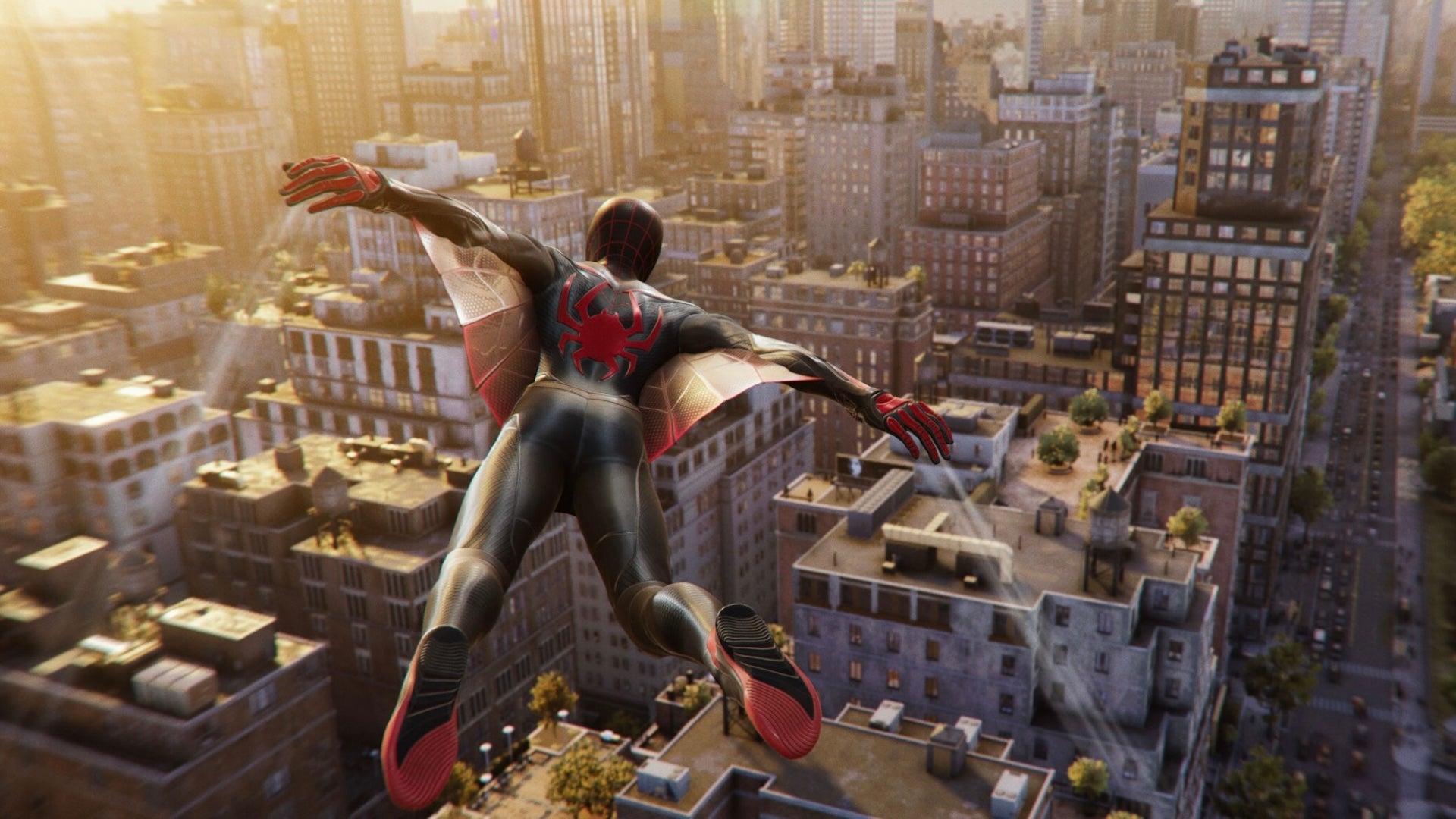Spider-Man games are skateboarding games, at least in spirit. As you make your way through the concrete jungle of New York, moving from mission to mission, you’re forced to recontextualize the mundane. A flagpole becomes a shining launch point, a skyscraper flips onto its side to become a flat surface used to reach up higher and higher. In many ways, skateboarding also encourages this new way of seeing the world around you. Out of the drab and often grey environments of modern cities suddenly spring playgrounds— ultimate assault courses, made up of railings, flatland and make-shift ramps. The thread that runs from Spider-Man to skateboarding is as evident as ever in Marvel’s Spider-Man 2, and with the addition of the Web-Wings, there’s even a direct analogue to the most game-changing mechanic added to a skating game: the revert from Tony Hawk’s Pro Skater 3.
While in real life, the revert is a fairly inconsequential trick used to go from backward-facing movement to forward-facing, its introduction into Tony Hawk’s Pro Skater 3 marked a huge leap forward in the ways in which players could traverse the game’s many courses. For the first time, it was possible to link vertical tricks seamlessly into horizontal movement. You could launch from a quarter pipe, using the air you’ve gained to pull off several tricks, and then right as you made contact with the ground again, use a revert into a manual, continuing your combo forward into a new plane of motion. Suddenly new possibilities for combos opened up, in a way that made Tony Hawk’s Pro Skater 2 (considered by many to be a 10/10) feel lesser as a result. The change was so impactful in fact, that it was baked into 2020’s Tony Hawk’s Pro Skater 1 +2, adding what is now thought of as an essential skateboarding game feature to the best collection of maps in the series.
Spider-Man is one of the few modern superheroes that, Uncle Ben trauma aside, actively appears to enjoy his day-to-day escapades. Through the eyes of Spider-Man, whether that’s Miles or Peter, New York really does feel like a playground that’s meant to be enjoyed, rather than a challenge that must be overcome.It’s telling that in my nearly 30 hours with Spider-Man 2, I never even considered using the Fast Travel option. This was of course true in the previous games as well, but it’s even more true here. Not only can you move faster than ever, but with more traversal options at your disposal, every cross-city jaunt feels unique and most importantly, fun.
There’s an unwritten agreement that Marvel’s Spider-Man 2 establishes with the player early on. While there’s very few tangible reasons not to, you must touch the ground as little as possible. Not only that, but you must make your way from point A to B as stylishly, as fluidly, and with as long a combo as you can muster. Aside from some XP awarded for stringing together tricks, there’s very little reward for entering into Marvel’s Spider-Man 2’s unspoken combo agreement. Nevertheless, as you go from jewellery store break-in, to supervillain rampage, you move with the determination of an Olympian acrobat, as if you were expected to be scored upon reaching your destination. Anyone who’s even dabbled in skateboarding will know this feeling all too well, as previously boring commutes are turned into ever-escalating tests of both bravery and technical ability. In many ways, it’s this paradigm shift that offers us mere humans our best chance at understanding how a superhero like Spider-Man may see the world.
